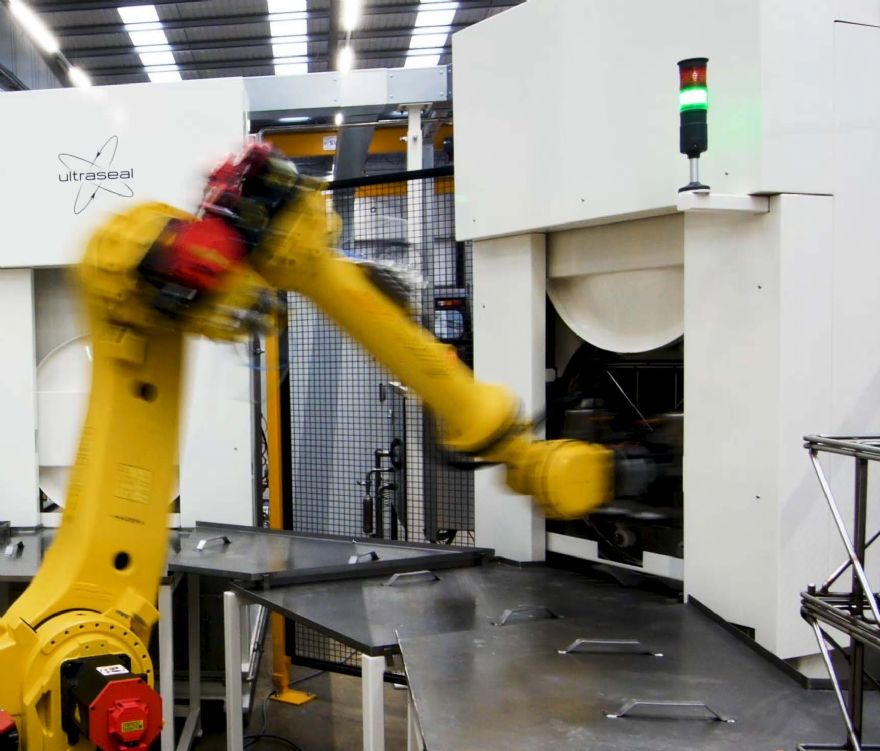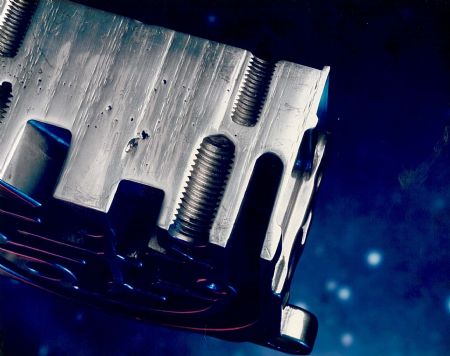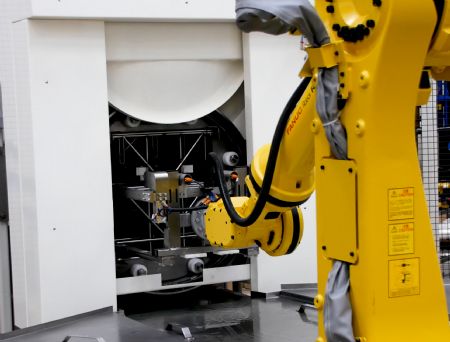
Demand for die casting is on the rise, with the market projected to grow to US$94.1 billion by 2025. In the USA, the automotive industry stands out as a major user of die-casting, with a high proportion of components — including cylinder heads, engine blocks, transmission cases, e-motor housings, and structural parts — produced using high pressure die casting processes.
With an ever-increasing focus on creating greener methods of transport and meeting zero-emissions targets in cities around the world, automotive manufacturers are increasingly focused on lightweighting vehicle parts and structures.
Mr Remler said: “By reducing the overall vehicle weight, manufacturers can increase fuel economy, deliver better performance and reduce the emissions from each vehicle. To achieve this, many automotive manufacturers use die casting to manufacture parts from lightweight materials such as aluminium and magnesium.
“As well as being stronger and lighter, casting larger single piece components means that there are less welded joints or fasteners, all of which add to the overall weight.
The drive for new and more-efficient production methods has brought with it significant investment in R&D and new technologies. As Industry 4.0 shapes the competitive landscape of manufacturing companies world-wide, the automotive industry is embracing digital transformation to drive efficiencies and improve production outcomes.

From harnessing production data to improve processes and digitising supply networks, through to the introduction of artificial intelligence, use of robots to fulfil repetitive processes and the ongoing debate about human/robot interaction - digitisation of the industry is well underway.
However, while manufacturing technology and processes evolve to create operational efficiencies and meet market needs, one legacy challenge remains — that of porosity. Porosity is one of the defects most frequently encountered in aluminium die casting.
Microscopic voids in the metal can lead to leak paths and reduce the density of the cast components. Untreated, casting porosity leads to costly scrappage, creating waste inefficiencies in materials, energy and production time.
For parts that go into applications that need to be air or fluid-tight - for example in fuel or cooling systems — this can be an especially critical issue.
The role of vacuum impregnation For a leading US-based manufacturer of engines, off-road vehicles and motorbikes, creating best-in-class vehicles and achieving operational excellence is key to its continued success. Despite an extremely strong focus on quality control, the company was experiencing high scrappage rates due to porosity in its die-cast engine components.
To combat the issue, the company was shipping parts to another state for vacuum impregnation processing. This specialist process is designed to permanently seal porosity by using a specially formulated resin to fill porosity in automotive castings. While this arrangement provided a solution, the process was a time-consuming one, often adding a week to production times.
To overcome lags in production, the company resorted to keeping a week’s worth of inventory on-site, taking up valuable production space and increasing working capital. Yet, despite the time, effort and financial investment in the process, the scrappage rate was still around 11%.
The company turned to
Ultraseal International, a world-leading specialist in sealing porosity and leak paths in die cast, sintered and electrical components, which has its headquarters in Coventry. Ultraseal’s engineers worked with the company to design and install a fully automated, robotic, vacuum impregnation system.
The bespoke automated solution offers fast cycle times, improved productivity, cost-effectiveness, more reliable sealing rates and improved environmental performance. Crucially, during an initial system trial, the 11% scrappage rate was reduced to nil and the one-week turnaround to a speedy 12min.
Mr Remler explained: “By switching to an automated solution, the company has achieved 100% sealing effectiveness and improved output quality. Where the handling and processing process had previously resulted in component damage, the parts now benefit from an impressive and consistent gloss black finish.
The addition of a multifunctional corrosion inhibitor means that the products remain resistant to rust, retaining their glossy appearance long beyond the point of manufacture.

In an industry where batch traceability and process control are vital, the Ultraseal system software offers total process control visibility and data logging. For added flexibility, the system can be pre-programmed to process components from two different production lines or alternate between both, while remote diagnostics help to optimise plant performance and minimise unplanned downtime.”
“With both shipping costs and time a huge issue with the previous outsourced set-up, the small footprint of the system meant that it could be integrated into the customer’s existing manufacturing line without compromising on workflow or floor space.”
Reducing costs and improving sustainability He continued: “While many industries are yet to fully embrace the benefits that Industry 4.0 implementation could bring, elements of the smart factory are increasingly commonplace. For the automotive industry, where levels of digital adoption are high, smart technology and IoT connected devices offer proven benefits over more traditional manufacturing processes.
Despite the perception of Industry 4.0 as a revolutionary process requiring a huge level of capital investment, robotic automation is increasingly affordable and available to organisations of every size. In fact, such systems often offer a fast return on investment, reducing floor space and allowing production processes to run for longer periods.
In the case of Ultraseal’s robotic vacuum impregnation system, equipment, chemicals and processes are more economical and environmentally sustainable than traditional alternatives - while also offering improved quality and increased repeatability.
Casting impregnation is usually carried out in three stages. Initially, parts are placed in an autoclave and a vacuum is used to draw air out of any voids before a liquid sealant is introduced. The parts are then washed in a cold wash cycle to remove excess sealant from component surfaces as well as critical areas such as threaded holes. The final step is the hot cure cycle, where heat is used to polymerise the sealant within the void, turning it from a liquid state into a solid polymer.
Like all other manufacturing processes, vacuum impregnation produces waste. In the standard impregnation process described above, around 95% of the sealant is washed off the components during the cold wash cycle. These non-recoverable chemicals must be handled as effluent.
This adds considerable environmental management processes, as well as significant costs for both the processing and wastage of large volumes of chemicals. The cold wash process in the Ultraseal Sealant Recycling System operates in a closed loop. As well as enabling the sealant to be reclaimed from the cold wash solution, the process allows both the sealant and the cold wash solution to be reused, with no need to continually replace the water.

This automated process offers best-in-class sustainability. With lower sealant and water consumption, less effluent discharge and no need to ship parts to distant suppliers, the customer has significantly reduced its environmental impact when compared to its previous vacuum impregnation process.
As automotive manufacturers continue to embrace thinner-walled castings, lighter materials and new technologies in a bid to reduce vehicle weight, porosity sealing technology will become an increasingly vital process. Incorporating vacuum impregnation into production lines can help the automotive industry to reduce scrap and material wastage, while increasing component life cycles and improving environmental performance.
Mr Remler concluded: “By ‘owning’ the vacuum impregnation process, manufacturers have peace of mind that they have given their best in terms of quality, sustainability and environmental responsibility – at a fraction of the cost of scrapping components.
“However, for those not equipped to install a completely owned and automated solution to their own site, Ultraseal offers on-site managed services and external service centres, allowing customers to access a solution that best fits their operational requirements.”